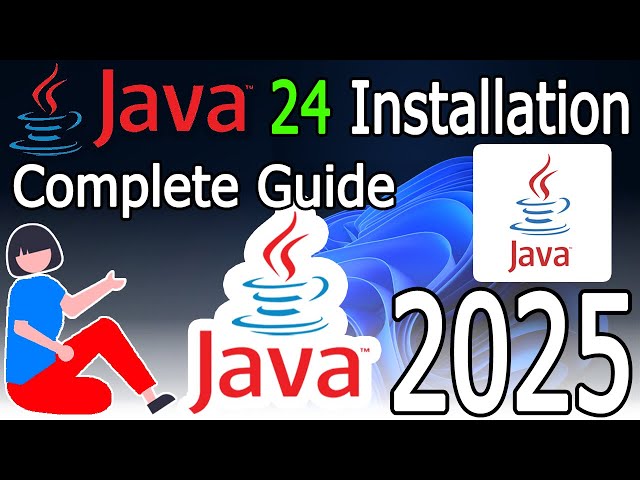Java, a cornerstone of enterprise software for decades, is experiencing a renaissance. Gone are the days of slow, multi-year release cycles. Today, a vibrant and rapidly evolving Java SE landscape delivers powerful new features every six months. This accelerated pace, combined with groundbreaking projects like Loom, Panama, and Valhalla, is reshaping how developers write concurrent, performant, and interoperable applications. Staying current with the latest Java SE news is no longer optional; it’s essential for building modern, efficient, and scalable systems. This article dives deep into the most significant recent developments, offering practical code examples and insights to help you leverage the full power of modern Java.
The New Era of Concurrency: Project Loom and Virtual Threads
For years, Java’s concurrency model has been built around platform threads, which are thin wrappers over operating system (OS) threads. While powerful, they are a finite and heavyweight resource. Creating thousands of platform threads can quickly exhaust system memory and lead to performance degradation due to context-switching overhead. This limitation has been a significant piece of Java concurrency news for a long time.
Enter Project Loom, which became a production-ready feature in Java 21 (JEP 444). The star of this project is Virtual Threads. These are lightweight threads managed by the Java Virtual Machine (JVM) rather than the OS. A single platform thread can manage thousands, or even millions, of virtual threads. When a virtual thread executes blocking I/O (like a network call or database query), it doesn’t block the underlying OS thread. Instead, it “unmounts” from the carrier platform thread, allowing that OS thread to run another virtual thread. This dramatically improves application throughput for I/O-bound workloads, a common scenario in microservices and web applications. This is arguably the most impactful Java 21 news for backend developers.
Practical Example: From Platform Threads to Virtual Threads
Let’s see the difference in practice. Imagine a simple web server that needs to handle many simultaneous requests, each involving a simulated network call. Using a traditional fixed-thread pool, we quickly hit a bottleneck.
import java.util.concurrent.ExecutorService;
import java.util.concurrent.Executors;
import java.util.stream.IntStream;
public class TraditionalConcurrency {
public static void main(String[] args) {
// A thread pool with a limited number of heavyweight platform threads
try (ExecutorService executor = Executors.newFixedThreadPool(100)) {
IntStream.range(0, 10_000).forEach(i -> {
executor.submit(() -> {
// Simulate a blocking I/O operation
try {
Thread.sleep(1000);
} catch (InterruptedException e) {
Thread.currentThread().interrupt();
}
System.out.println("Task " + i + " completed by thread: " + Thread.currentThread().getName());
});
});
}
// This approach will take a long time as only 100 tasks can run concurrently.
}
}Now, let’s refactor this using virtual threads. The change is minimal, but the impact on scalability is enormous. We can use the new Executors.newVirtualThreadPerTaskExecutor() factory method.
import java.util.concurrent.ExecutorService;
import java.util.concurrent.Executors;
import java.util.stream.IntStream;
import java.time.Duration;
public class VirtualThreadsConcurrency {
public static void main(String[] args) {
// An executor that creates a new virtual thread for each task
try (ExecutorService executor = Executors.newVirtualThreadPerTaskExecutor()) {
IntStream.range(0, 10_000).forEach(i -> {
executor.submit(() -> {
// Simulate a blocking I/O operation
try {
Thread.sleep(Duration.ofSeconds(1));
} catch (InterruptedException e) {
Thread.currentThread().interrupt();
}
// Note: Thread.currentThread() now returns a VirtualThread
System.out.println("Task " + i + " completed by thread: " + Thread.currentThread());
});
});
} // The executor waits for all tasks to complete upon closing
// This will complete much faster as all 10,000 tasks can run "concurrently".
}
}This simple change allows the application to handle a massive number of concurrent tasks without being limited by the pool size of platform threads. This is a game-changer for the entire Java ecosystem, with frameworks like Spring Boot and Helidon already providing deep integration for virtual threads. The latest Spring news is heavily focused on leveraging this new concurrency model.

Bridging Worlds: Native Interoperability with Project Panama
For decades, interacting with native code (libraries written in C/C++) from Java required the Java Native Interface (JNI). JNI is powerful but notoriously complex, error-prone, and brittle. It involves writing C “glue code” and managing a complex build process. Project Panama aims to replace JNI with a pure-Java, safe, and performant API. The core of this project is the Foreign Function & Memory (FFM) API, which has been incubating for several releases and is finalized in Java 22 (JEP 454).
The FFM API provides a clean, modern way to call native functions and access native memory directly from Java code. This opens up possibilities for integrating with high-performance libraries for scientific computing, machine learning, or interacting with OS-specific APIs without the headache of JNI. This is significant Java performance news, as it allows developers to selectively use highly optimized native code for performance-critical sections of their applications.
Practical Example: Calling a C Standard Library Function
Let’s demonstrate how to use the FFM API to call the standard C library function strlen, which calculates the length of a C string. This example highlights the clarity and type-safety of the new API.
import java.lang.foreign.*;
import java.lang.invoke.MethodHandle;
public class PanamaFFMExample {
public static void main(String[] args) throws Throwable {
// 1. Get a lookup object for the C standard library
SymbolLookup stdlib = Linker.nativeLinker().defaultLookup();
// 2. Get a handle to the 'strlen' function
MethodHandle strlen = Linker.nativeLinker().downcallHandle(
stdlib.find("strlen").orElseThrow(),
FunctionDescriptor.of(ValueLayout.JAVA_LONG, ValueLayout.ADDRESS)
);
// 3. Allocate off-heap memory and copy a Java string into it
String javaString = "Hello, Project Panama!";
try (Arena arena = Arena.ofConfined()) {
MemorySegment cString = arena.allocateFrom(javaString);
// 4. Invoke the native function
long length = (long) strlen.invoke(cString);
System.out.println("Java String: '" + javaString + "'");
System.out.println("Length from native strlen(): " + length);
}
}
}
// To run this (with Java 21+), you need to enable the preview feature:
// java --enable-native-access=ALL-UNNAMED --enable-preview PanamaFFMExample.javaThis code, while having some new concepts like Arena and MemorySegment for safe memory management, is entirely Java. There is no C code or complex build step required. This simplification is a major piece of OpenJDK news and will significantly lower the barrier for native integration.
Ecosystem Evolution: AI, Frameworks, and Modern Language Features
The innovation isn’t confined to the core JVM. The entire Java ecosystem is evolving. From build tools like Maven and Gradle to frameworks like Spring and Jakarta EE, the community is embracing modern Java. The latest Maven news and Gradle news often revolve around improved support for new Java versions and more efficient dependency management.
The Rise of AI in the Java Ecosystem

One of the most exciting trends is the integration of AI capabilities directly into Java applications. The perception that Java is not a first-class citizen in the AI/ML world is a form of “Java psyop” that is quickly becoming outdated. Libraries like LangChain4j are providing powerful, easy-to-use abstractions for interacting with Large Language Models (LLMs). Furthermore, the much-anticipated Spring AI project aims to apply the core Spring principles of dependency injection and abstraction to AI engineering, making it simple to build generative AI-powered applications. This is a top item in recent Spring AI news.
Here’s a quick look at how simple it is to interact with an OpenAI model using LangChain4j:
import dev.langchain4j.model.chat.ChatLanguageModel;
import dev.langchain4j.model.openai.OpenAiChatModel;
public class AiExample {
// Interface defining our interaction model
interface Assistant {
String chat(String userMessage);
}
public static void main(String[] args) {
// Requires an OPENAI_API_KEY environment variable
ChatLanguageModel model = OpenAiChatModel.builder()
.apiKey(System.getenv("OPENAI_API_KEY"))
.modelName("gpt-3.5-turbo")
.build();
String question = "What is the most exciting Java SE news from the last year?";
String answer = model.generate(question);
System.out.println("Question: " + question);
System.out.println("Answer: " + answer);
}
}
// Requires dependencies like langchain4j and langchain4j-openaiEmbracing Modern Language Features
Recent Java versions (from Java 17 to 21) have introduced a wealth of language features that reduce boilerplate and improve code clarity. Features like Records, Sealed Classes, and especially Pattern Matching for switch and instanceof are changing how developers write everyday code. These features are not just syntactic sugar; they enable more robust and expressive domain modeling.
Pattern matching, for instance, allows you to combine a type check and a variable binding into a single, elegant operation. This makes complex conditional logic much cleaner.

sealed interface Shape permits Circle, Rectangle, Square {}
record Circle(double radius) implements Shape {}
record Rectangle(double length, double width) implements Shape {}
record Square(double side) implements Shape {}
public class PatternMatchingExample {
public static double getArea(Shape shape) {
return switch (shape) {
// Pattern matching with variable deconstruction
case Circle(double r) -> Math.PI * r * r;
case Rectangle(double l, double w) -> l * w;
case Square(double s) -> s * s;
// No 'default' needed because the interface is sealed
};
}
public static void main(String[] args) {
Shape myCircle = new Circle(10.0);
System.out.printf("The area of the circle is: %.2f%n", getArea(myCircle));
Shape mySquare = new Square(5.0);
System.out.printf("The area of the square is: %.2f%n", getArea(mySquare));
}
}This code is more concise, readable, and safer than the old approach using a chain of if-else instanceof checks. The compiler can even verify that the switch is exhaustive because the Shape interface is sealed.
Best Practices and Navigating the Modern JDK Landscape
With rapid innovation comes the need for updated best practices. Here are some key considerations for modern Java developers:
- Choose Your JDK Wisely: The world of Java distributions has expanded. While Oracle Java is a leading choice, there are excellent, production-ready OpenJDK builds from vendors like Adoptium (Eclipse Temurin), Amazon Corretto, Azul Zulu, and BellSoft Liberica. Your choice may depend on support requirements, licensing preferences, and specific performance characteristics.
- Stay on an LTS Version (or Don’t): Long-Term Support (LTS) versions like Java 8, 11, 17, and 21 receive updates for several years, making them stable choices for enterprise applications. However, to leverage the latest features like virtual threads and the FFM API, you may need to adopt the newer non-LTS releases. The best strategy depends on your organization’s agility and needs.
- Rethink Concurrency Patterns: With virtual threads, old patterns like thread-pooling for I/O tasks are often anti-patterns. The new “thread-per-request” model is now highly efficient. However, be mindful of situations where you might still need platform threads, such as for CPU-intensive tasks.
- Leverage New Language Features: Don’t just compile old code on a new JDK. Actively refactor your code to use records, pattern matching, and other modern features. This leads to more maintainable and less error-prone code. This is one of the most important Java wisdom tips for developers looking to grow.
Conclusion: The Future is Bright for Java
The Java SE platform is more dynamic and powerful than ever. The latest Java SE news is a testament to a thriving community and a clear vision for the future. Groundbreaking features like Virtual Threads are revolutionizing concurrency, while Project Panama is tearing down the barriers between Java and native code. The broader Java ecosystem news shows a platform that is not just keeping up but leading the way in areas like enterprise development and even the burgeoning field of AI. For developers, the message is clear: now is an exciting time to be a Java programmer. By embracing these new features and staying informed, you can build applications that are more performant, scalable, and maintainable than ever before. The journey from Java 8 to Java 21 and beyond is one of continuous improvement and innovation.

